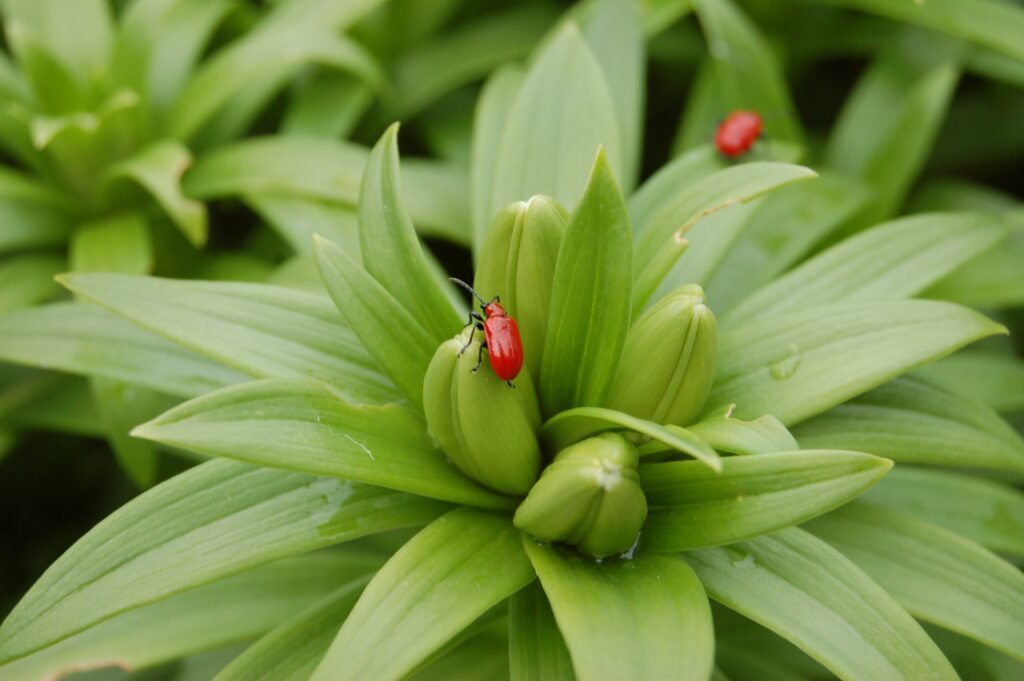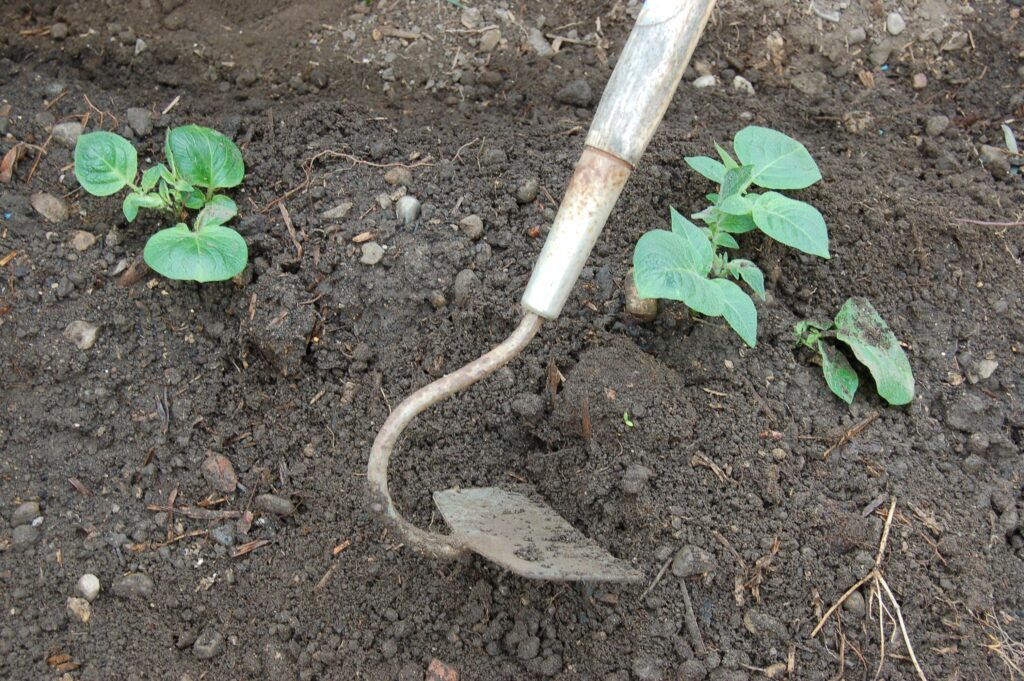Get busy in May’s garden
Apologies for being late with the May newsletter. It’s been on my list of jobs to do for the past couple of weeks, and here we are now on the 8th May and I’m only just doing it! Over the past few weeks Jill and I have been trying to play catch up in the new vegetable garden and after a lot of hard work we feel we are getting somewhere. We cleared and levelled the site and then constructed four raised beds from sleepers. The topsoil arrived last Friday and it’s all been barrowed into the beds and I’ve already planted some veg plants that I’d started off in the greenhouse. At this point I’ve got to put my hand up and admit that I didn’t barrow much of the soil, Jill did, all five tons. Instead, I was preparing a long border that runs along the side of the vegetable garden getting it ready to plant a row of cordon fruit trees. What should have been a fairly simple job turned into a much bigger one. I lifted the turf first and when I tried to push my spade in, it bounced out. To my horror I discovered what I think was an old hard-standing area about 6 inches down made from broken bricks, concrete and tarmac, which took me a day to break up with a pickaxe. It certainly wasn’t what I was expecting, but it’s all done now and 15 apple and pear trees have been planted and are being watered in by the rain as I type!
If you want to see what we’ve been up to in the veg pot, we’re featuring it this Thursday 11th May on our YouTube channel, Pots & Trowels.
Although I’m around a month later than normal planting in the veg garden. I think this year the season is 2-3 weeks behind. Although we’ve had some fine days, the temperatures haven’t been that high and the nights have been very cool. Certainly, this time last year it was much warmer and plants were further on. I’d be interested to know if it’s the same where you are.
PS – I heard a cuckoo this afternoon – the first I’ve heard for several years.
Jobs for May
Now if the perfect time to plant perennials and shrubs into the garden while there is plenty of moisture in the soil. As the soil and air temperature warm up, the new plants will soon establish.
Shrubs such as spiraea, forsythia, viburnum and ribes that flowered in March and April can be given a light prune if needed. Cut back long stems to help improve the shape and thin out twiggy and crossing stems to prevent overcrowding. Don’t however, prune too hard as that will encourage strong new growth at the expense of flowers next spring.
Towards the end of the May you can start planting tender bedding plants out into the garden. If planting in containers or hanging baskets, make sure they are kept frost free until the plants establish.
Dahlia tubers can be planted out into the garden in good garden soil. Plant so that the top of the tuber is a couple of inches below soil level and mark the spot with a short cane. By the time new shoots appear, hopefully the danger of frost will have passed.
Already I’ve spotted a couple of red lily beetles, so if you have lilies growing, check the plants for the pest and squash them.

Start supporting tall perennials before they get too tall and fall over, canes, twiggy sticks or plant supports are ideal.
If you are not taking part in No Mow May, the lawn will need regular mowing to keep it looking good. Ideally give it a weekly trim which helps to keep the lawn healthy and with a thick covering of grass.
Because it’s a late season, there’s still time to sow vegetables such as peas, beans, carrots, lettuce, beetroot and parsnips in the garden. In fact very often a later sowing does better that early sowing when the soil is cooler.
Tomato plants can be planted into a cold greenhouse or conservatory from early May, either in large pots or growbags, but remember on cold nights to drape some garden fleece over them. If planning to grow outside tomatoes on a patio wait until the end of May.
If growing cucumbers in a greenhouse, remember they like it warm. Close the vents at night to avoid draughts and if a cold night is forecast, cover the plants with fleece.
Earth-up potatoes into ridges and give them a feed of a granular fertiliser to help underground stems and tubers develop.

Pheromone traps to help control Codling moth on apples trees can be hung in the trees from the 3rd week of May. They do work and will greatly reduce the amount of damage to the fruits.
For more weekly gardening tips and advice from Martin visit “Pots & Trowels” on Facebook or subscribe on YouTube for free.
Happy gardening